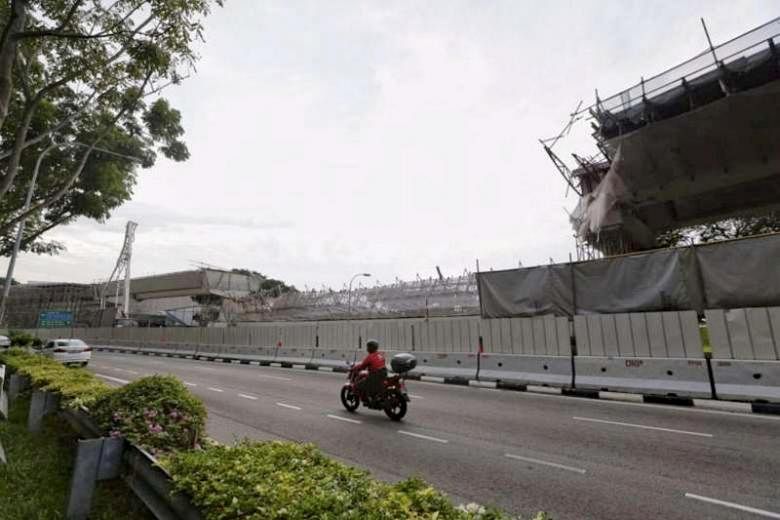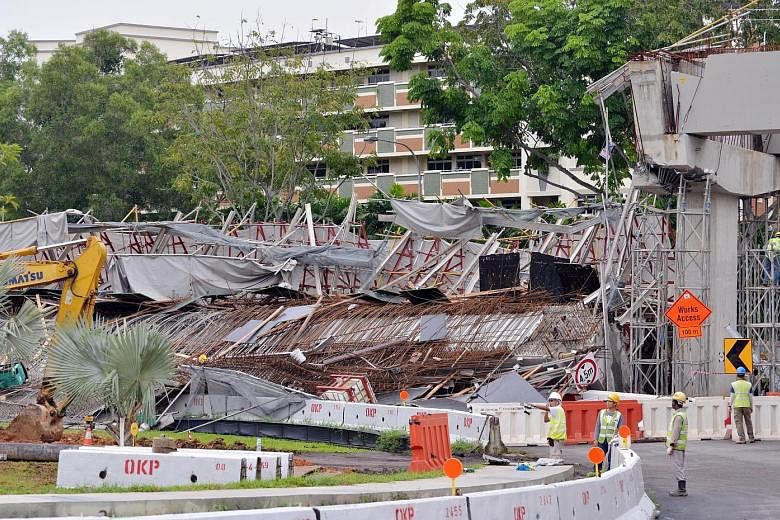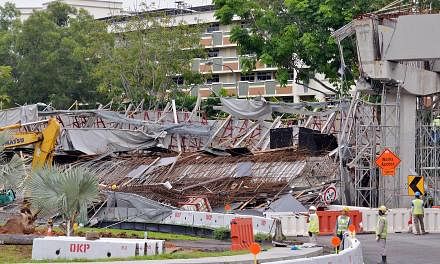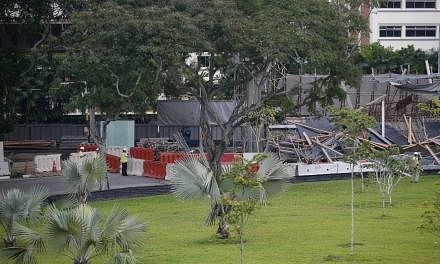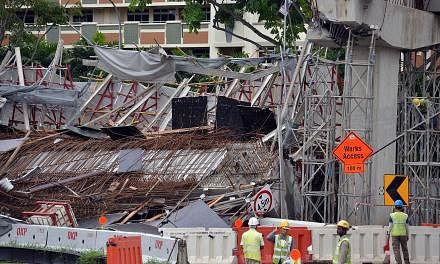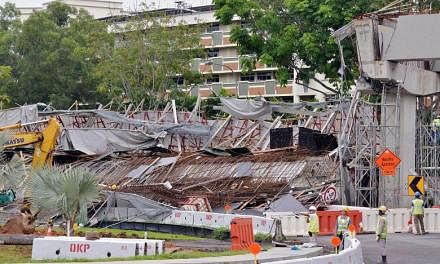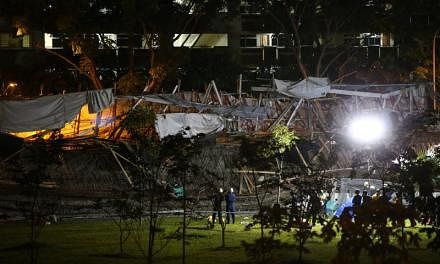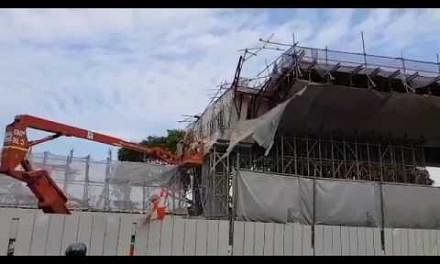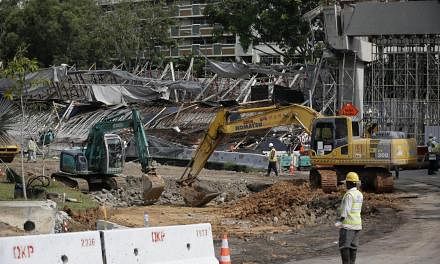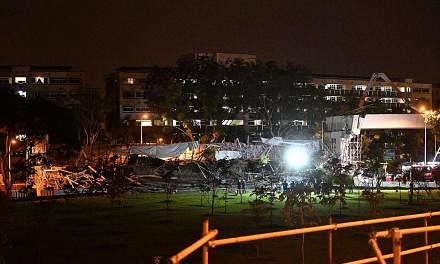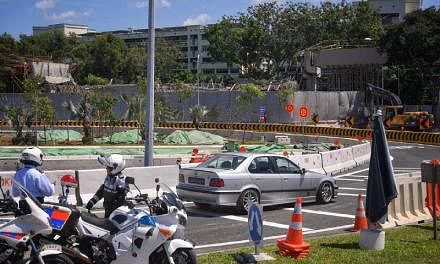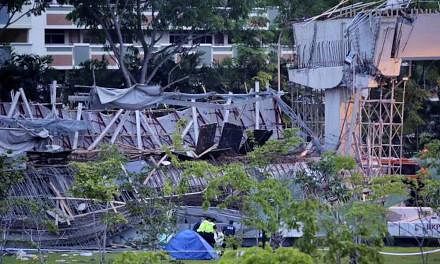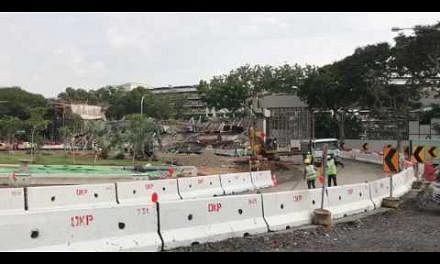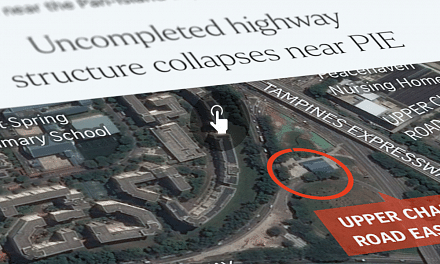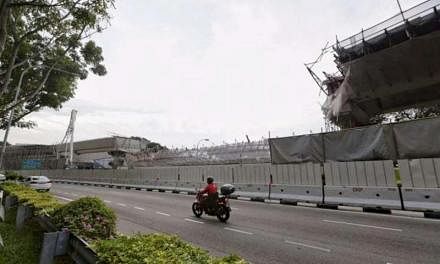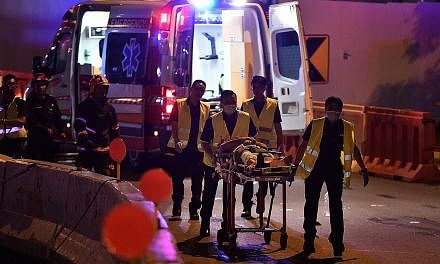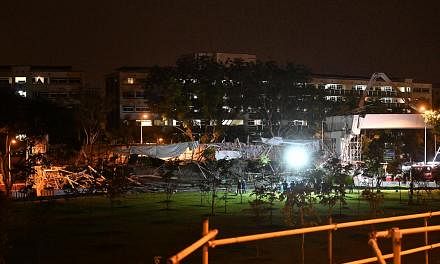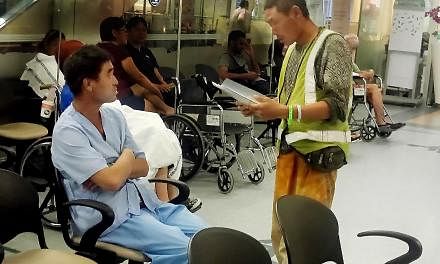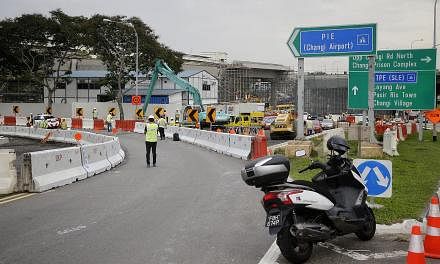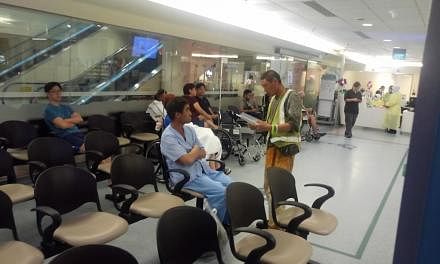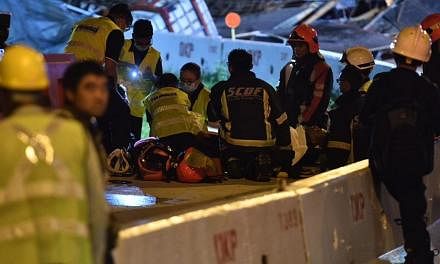In most construction failures, human error ranks high as a probable cause. Yesterday's worksite collapse in Upper Changi Road East is unlikely to be an exception.
Local listed construction firm Or Kim Peow (OKP) was casting a section of the viaduct adjacent to a slip road from Upper Changi Road East to the Pan-Island Expressway when it gave way, killing one worker and injuring 10.
OKP, which clinched a $94.6 million contract to build the viaduct in November 2015, was scheduled to complete it by the first quarter of 2020. If it was falling behind schedule, as is the case with a number of other infrastructural projects here, it was not apparent. The worksite had a clean safety record until yesterday.
While the risk of accidents happening tends to increase if a builder is rushing, it exists even if a builder is well on time.
Lapses in design, work processes, supervision, procurement of materials and safety protocols would inevitably have been some of the many failures unearthed by investigators in past incidents.
In the case of the Nicoll Highway cave-in of April 2004 - which claimed four lives - persistent ground movements were systematically ignored during the construction of MRT's Circle Line.

Among several wilful missteps, a public inquiry found that the builders were adjusting the parameters of ground movement readings so as to be able to continue working.
While accidents are not always avoidable, they come under an unnatural glare in well-regulated Singapore when a road caves in or a viaduct collapses.
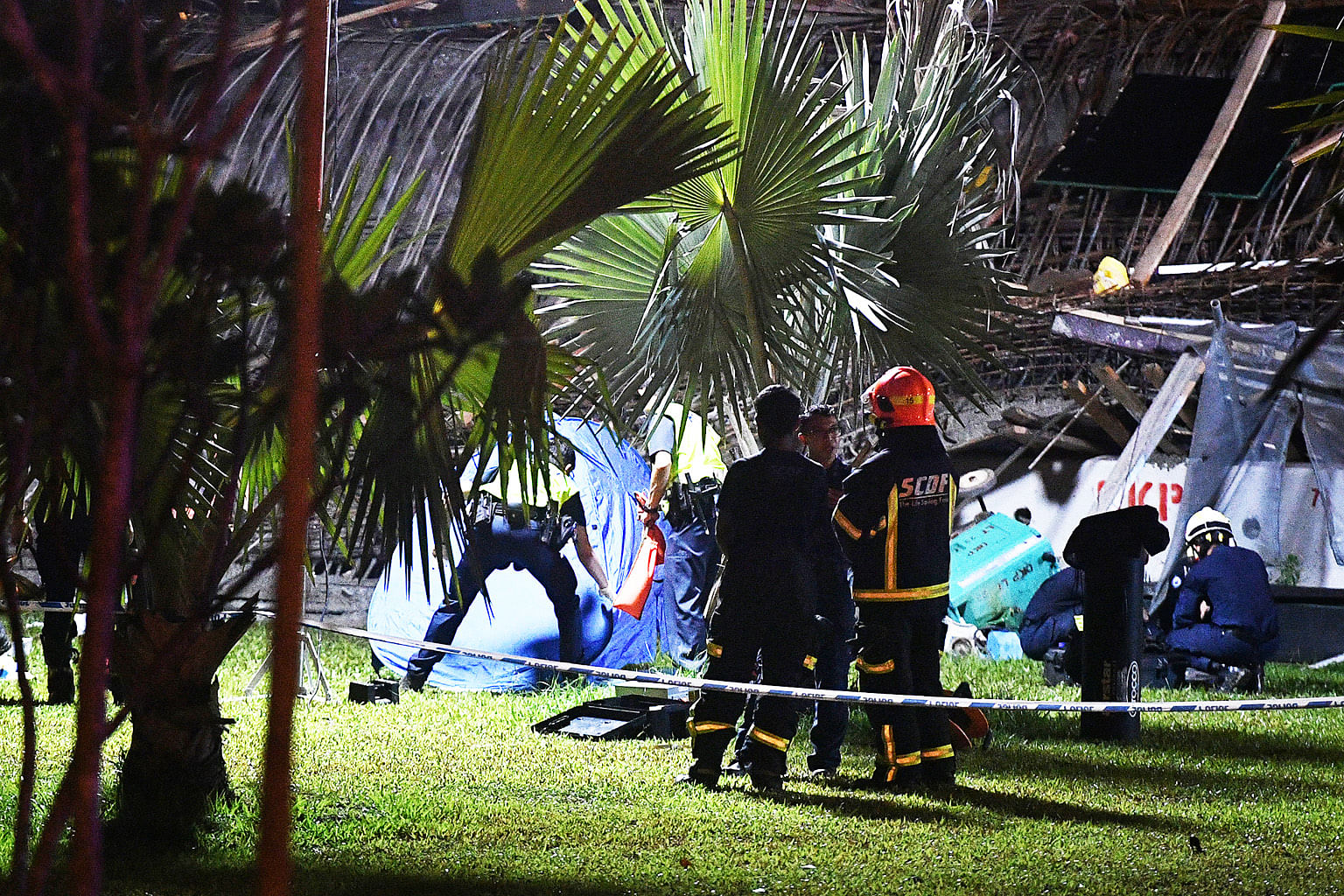
Especially when it appears that the industry, and indeed the regulatory regime, has not learnt from recent past mistakes.
In the case of yesterday's tragedy, preliminary investigations found that failed corbels were responsible for the viaduct section collapsing. But why or how did the corbels give way?
Engineering experts point to a number of possible reasons.
Former Institution of Engineers Singapore president Chong Kee Sen said corbels should be able to carry the weight of the viaduct section, with some of the load being shared with scaffolds and other supporting structures on the ground.
Mr Chong said it was possible for an "unforeseen impact load" to overwhelm the corbels as well as the other supports. This could be owing to overloading, ground movements or other construction activities.
Vertes Technologies director Chiam Soon Kiam said the corbels - made of reinforced concrete - might not have been given enough time to strengthen after they were cast.
Singapore Contractors Association president Kenneth Loo said that in most cases, concrete would take 28 days to reach its full strength, although contractors might take samples of the concrete on the seventh day to determine if it is strong enough.
A veteran civil engineer told The Straits Times that corbels are usually "extremely strong structures" which do not give way "just like that".
So, what caused them to give way?
"There could have been an error in the design, or the structures were not constructed to design specifications," the engineer, a member of the Institution of Engineers, Singapore, ventured.
Either of these could have happened despite the stringent checks and counter-checks in place, where civil work designs are scrutinised and signed off by independent qualified third parties.
"In some cases, temporary structures are not allowed to rest on corbels," the engineer said.
"This is because when concrete is being cast, it does not have any strength, and the whole thing becomes dead weight. The moisture of uncured concrete also adds to this weight."
"To be fair, we don't know at this point if this was the case," he noted.
Another possible reason for the structural failure is ground movement.
"If the temporary structure was supported by ground structures and, if the ground sank, it could cause a collapse," he said, but noted that builders would have also tested the ground for stability before setting up the supports.
Asked if workers are supposed to be on top of a structure when it is being cast, the civil engineer said: "On paper, they are not supposed to be, for safety reasons. But in practice, it is usual for men to carry out checks during casting to spot and rectify any mistakes along the way."
If what these experts are saying holds water, human error as a root cause looms large once again.
•Additional reporting by Ng Jun Sen

